[Post originally published on substack on March 28, 2022.]
At first, Kikuzato, the protagonist of the story, is a rather withdrawn teenage boy. He is indifferent to his surroundings and disinterested in making friends. But not for long! The unrelenting outreach of his cheerful and talkative classmate pulls him out of his shell. And the (at times) somewhat forceful and manipulative, though always well-intentioned, persuasion of his prosthetist set him on a new path in his athletic career. Amiable friends and competitive rivals accompany Kikuzato on his endeavor to become a track and field para athlete. Join them, and you’ll find out that Run on your new legs has more to offer than the gripping tale of a young athlete. [Post based on volumes 1–3]

A New Life
We meet Kikuzato Shōta, the protagonist of the story, at the beginning of his first year at Yamagamine High School. He clearly has no interest in making friends, let alone interacting with others. Neither does he seem to be interested in sports after having lost what was most dear to him: the ability to run around on the soccer pitch chasing after the ball at full speed.
In junior high school, he formed the perfect soccer combo with his best friend, Takekawa Kōki, and they decided to go to the powerhouse soccer school Yamagamine High together. After the graduation ceremony, they talk about their plan to become starting members and spend their high school days playing together as formidable soccer athletes. However, due to an accident on his way home from school that day, Kikuzato’s left leg had to be amputated above the knee, putting an end to this dream. Having re-entered school with a one-year delay, he seems to have resigned to a life without soccer and friends. Heedless of Kikuzato’s reclusive take on life, his classmate and member of the track and field club, Usami Isami, is determined to befriend him.

A Good Friend
In the beginning, Usami is the only one putting effort into making friends with Kikuzato. A coincidental meeting on the train gives Usami the chance to ensnare his classmate in a conversation. After this first icebreaker, he throws himself wholeheartedly into pursuing a friendship with his reluctant peer and tries to get him to join the track and field club. As it turns out, Kikuzato couldn’t have asked for a better (new) best friend. Not only because Usami shows him cute cat videos, buys him yummy snacks, or acts as his bodyguard. He is also a gifted track and field coach and expertly supports Kikuzato in his training. However, what Kikuzato appreciates most about Usami is the fact that he gets angry at him and that he scolds him for his misbehavior, something other people seem to have refrained from because of his disability.

Usami is not the only one who had a profound influence on Kikuzato, though. Having exited the train together after their introductory meeting, Kikuzato attracted the attention of yet another individual, one that is crucial for the story’s as well as his own development.
The Health Care Professional
After they got off the train, the two boys headed toward an elevator, where a child’s hand was just about to be squashed by the closing doors. Seeing this, Kikuzato instinctively rushed towards it at full speed, pushed the doors aside, and saved the unsuspecting victim. Although the child seemed rather clueless as to why the older boy deserved a “thank you,” one other person noticed Kikuzato’s heroic deed—or rather, the speed at which he accomplished it, despite running on a prosthetic leg that was not made for running.

Amazed by Kikuzato’s ability, Chidori Masanobu immediately approached the teenager, offering his business card and introducing himself as a prosthetist and orthotist. Usami sensed danger in this unconventional behavior and threw himself protectively in front of Kikuzato. There was no need for his caution, though, because Chidori had no malicious intent. Still, he did have a specific motive in mind when he offered his services… .
The Ulterior Motive
Chidori started out as a professional prosthetist and orthotist some time in 2012. In 2013, it was announced that Japan had won the right to host the Olympic and Paralympic Games in 2020. All excited about the possibility of producing prosthetics for world-class athletes and of demonstrating his mastery to even more potential customers, he announced to his employer: “The Paralympics in Tōkyō!? This is a great opportunity for us!!” However, his employer and coworkers, having their hands full with everyday prosthetics users, were not as enthusiastic about this prospect as Chidori. Consequently, he set out on this adventure alone… and failed. But big dreams aren’t crushed so easily! And the prosthetist’s dream is quite big, if you ask me, and that is to have the name “Chidori” be known across the world. To achieve this, he opened his own practice, and all he needed now was a promising athlete. One who is able to take first place and is willing to wear and thereby promote “Chidori sports prosthetics.” Kikuzato’s speedy sprint to the elevator must have stirred up the scent of fame and money, inciting the healthcare professional to win the boy over to his side.

On Equal Footing
Thanks to his cunning art of persuasion, supported by a hands-on presentation, an (innocent?) lie, and Kikuzato’s first-hand experience, Chidori convinces the teenager to partner up with him. Meaning, Chidori will forge him a sports prosthetic free of charge, and Kikuzato will run for him.
Now, you might be tempted to think that the crafty businessman is taking advantage of a helpless teenage boy who is in mourning over his lost leg and is looking desperately for a savior. But Chidori’s character is designed neither as a villain nor as a savior. He doesn’t claim to give the boy a ‘new life’ by providing him with a ‘new leg’ for free. Additionally, his goofiness, cheerfulness, and awkward honesty rid his personality of any bad intentions. Neither is Kikuzato in search of or in need of a savior, but he makes it clear that they cooperate on equal footing, each to achieve his respective dream.
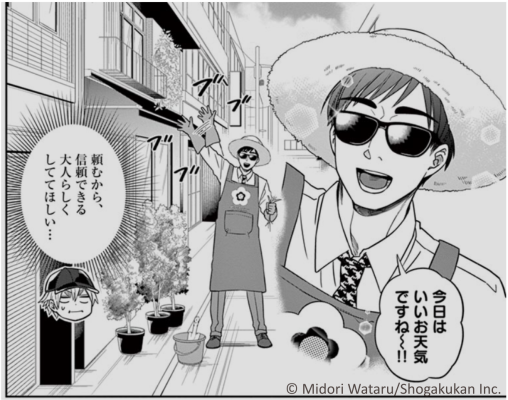
To further their understanding of sports prosthetics—and thereby get closer to reaching their dreams—Chidori decides that it is time for some recon and takes Kikuzato to a place where they can spy on the competition.
Shibuya
Kikuzato experiences running competitively for the first time at an event called Shibuya Full Sprint in—where else?—Shibuya, Tōkyō. This event is quite obvious and therefore, I assume, intentionally, modeled after the Shibuya City Games. The straight 60-meter track on Fire Street, the soft mats at its end, and the big signs atop the MODI shopping mall (NODI in the manga) are all as good as identical. Even the participating (foreign) finalists bear resemblance to the (foreign) runners depicted in the manga.
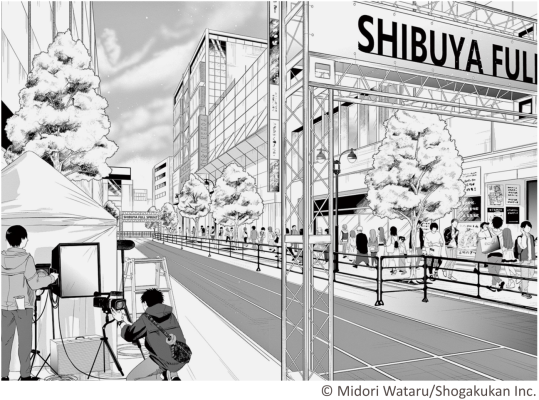
While waiting for the tardy prosthetist (who overslept), Kikuzato takes us on a tour around the vibrant area. Gripping tensely onto my reading device, I anxiously followed him, making his way through the rambunctious crowd, and we both let out a sigh of relief when he found refuge in a small corner next to the street.
When Chidori finally arrives, he emits an abundance of energy (no wonder after sleeping in) and immediately sets to work on hearing that one runner has dropped out. Sensing a chance to make his mark, he miraculously persuades the organizer to let Kikuzato participate. Similar to Loid in Spy x Family, Chidori seems to be prepared for every eventuality. He brought the blade, the tools, and stickers of his logo in various designs. Having fitted the leg to Kikuzato’s socket and adorned it with “Chidori” stickers, he sent the teenager off to his very first race.

The real-world Shibuya City Games took place in November 2017 and 2018 and were organized and sponsored by Sony. I guess the coronavirus pandemic took its toll on the event, because I couldn’t find any information on it in the years after. But, with COVID now (more or less) behind us, 2023 might be a good year for its revival. Besides creating awareness for para sports and para athletes, outside of the well-advertised Paralympic Games, the event was also a marketing opportunity for Sony and Xiborg. Chidori is of a similar opinion and wants to use the event (the Shibuya Full Sprint, that is) to stand out as best as he can to promote his brand.
In the end, the event was a full success for both of them. Kikuzato found a rival to compete against, giving him a new goal to aim for. And his conspicuous fall, which was broadcast in full on the big screen alongside the track, guaranteed Chidori plenty of attention.
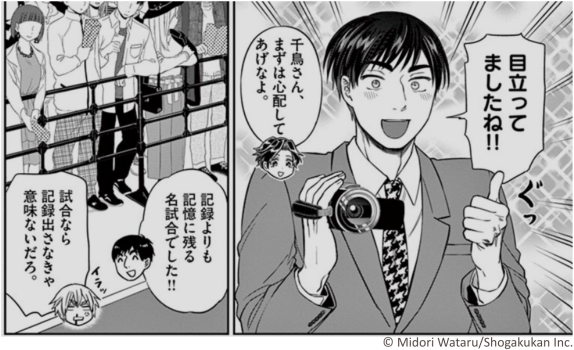
To Be Seen, Or Not To Be Seen
Unfortunately, the mangaka, Midori-sensei, doesn’t share with us if Chidori’s inbox was flooded with requests in the days following the event. However, we do know that word about Kikuzato’s race spread across his school, and he became quite the attraction among the female students. We don’t see his male schoolmates huddle around their phones in excitement, watching Kikuzato’s race and beleaguer him the moment they notice his presence.

At first, the rookie sports star didn’t look favorably upon the bothersome attention, but concluded that trying to hide his sporting activity would most likely be even more tiresome. Accordingly, he doesn’t seem to mind being seen with his ‘new’ leg—the sports prosthetic. It is also, again and again, presented in full to the gaze of spectators, sports club members, passersby, and us readers. On the other hand, we can glimpse his daily-use prosthetics primarily when the hem of his trousers moves.
Visibility might not always be desired. Take Kikuzato’s father, for example, who prefers that his son doesn’t train with the blade exposed, where the neighbors can see him. Despicable as it is, his attitude is tied to a desire not to stand out and to appear like the ‘able-bodied everybody.’ Kikuzato himself seems to prefer that his disability remain inconspicuous in his everyday life. Why else would he repeatedly remove the help mark until, one day, he found it glued to his backpack ?

Midori-sensei touches upon an important issue here and encourages us to reflect on our own attitudes with regard to normalcy and visibility, how it impacts our own thinking, and how it influences the lives of people with disabilities.
Contrary to the help mark, which ‘marks’ Kikuzato as a person with a disability, the blade marks him as an athlete, and his athletic activity is immediately rewarded with female attention—because, of course, athletes are cool. And usually, the more successful they are, the cooler and more attractive they become. In any case, the ones in the manga are manly, muscular, and admired by Kikuzato and women alike. But not everyone is an (elite) athlete and can fall back on the ‘coolness’ of athletic achievements.
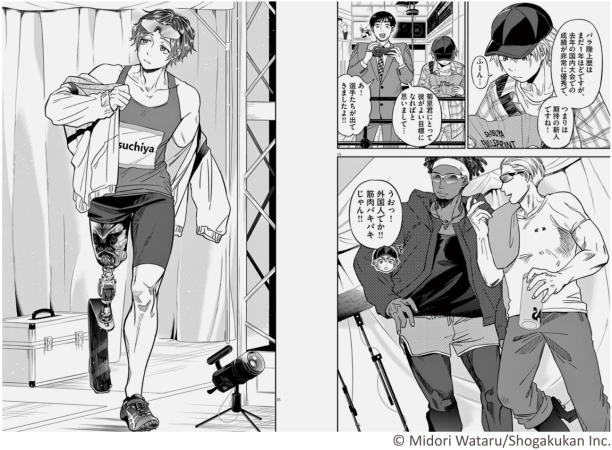
Also, people will most likely react differently when seeing or meeting an athlete (or a person) with a disability. The same is true for the school’s track and field club, which Kikuzato eventually joins.
The Track And Field Club
Midori-sensei assigns four different characters to the track and field club, and we can therefore observe four different reactions to Kikuzato’s prosthetic leg. I wondered which one of those would best reflect my own attitude and behavior. Would I go out of my way to support the athlete, like Usami did for Kikuzato, or rather let others take the lead, like the laid-back captain of the club? Maybe I’d just ask directly, like Sakashita, who stared unabashedly in wonder and excitement at Kikuzato’s prosthetic leg. Or would I react like Yashima and simply try to deny my support in fear of the ‘responsibilities’ that engaging with an athlete with a disability could cause me?
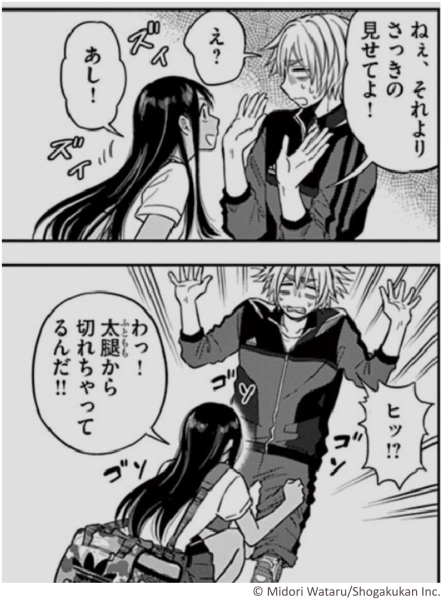
Yashima’s resistance to having Kikuzato on the team hints at a lack of knowledge, facilities, and the teacher’s or school’s support with regard to training with and for students with disabilities. But since the team’s captain and Yashima’s love interest, Sakashita, both want Kikuzato to join the team, he quickly mends his discriminatory ways and takes it upon himself to provide the newcomer with a thorough training schedule adapted to his needs.
The Fight Club And The Library
After Chidori secured his partner’s training (at the school’s track and field club) and his ‘official’ commitment (by getting his mother’s approval), he took the next step in educating the freshman runner about the world of running with sports prosthetics. He intended to do so by challenging the members of another club, and thus announced to Kikuzato that they would raid the Carbon Fight Club.
Waiting at Shin-toyosu station for his (once again) belated partner to arrive, Kikuzato was full of anticipation for some hard-core action and the chance to test his skills against strong opponents. But instead of tough, burly men, he was confronted with energetic children—all of them wearing sports prosthetics.

Date, the gentle and good-natured instructor of the beginners’ class, explains that sports prosthetics are expensive, and some simply can’t afford them. So, the club gives those who want to run a chance to do so. The real-world equivalent, also located near Shin-toyosu Station at the Shin-toyosu Brillia Running Stadium, bears not quite such a flashy name but an equally creative one: the Blade Library. It opened its doors in 2017 and offers different rental blades for people who want to enjoy running. There is also a fitting workshop for those who are not (yet) confident in exchanging the daily with the sports prosthetic. The daily fee of ¥ 1,000 (currently about $ 7.7) seems rather cheap compared to the cost of a sports prosthetic. Costs range depending on the parts that are needed (knee joint, socket, blade) between ¥ 200,000–¥ 1,000,000 (approximately $ 1,530–$ 7,650) and are not covered by insurance. Kikuzato is really lucky to get one for free.
At the Carbon Fight Club, Kikuzato struggles to catch the little kids in the game of tag, while Chidori chats with the parents of potential future customers. Then, Midori-sensei directs our thoughts towards a particular event whose name was dropped here and there several times already and is now given full attention with the appearance of the impressive Dōjima Susumu, the Japanese representative for the 2020 [2021] Tōykō Olympic and Paralympic Games.

An Abundance Of Sidetracks
Digging a little into the history of the Paralympic Games was quite an eye-opener, because the Olympic and Paralympic Games were not always carried out as one single event. The Paralympic movement is said to have its origins in the Stoke-Mandeville Games for the Paralysed in 1948 in Great Britain. Yet, it was a struggle to get this event, officially recognized as the Paralympics Games in 1984, under the same organizational and financial roof as the Olympics, and for it to be co-organized and thereby carried out at the same location. This happened for the first time at the 1988 Olympics in Seoul. Only since 2001 have countries been obliged to bid for and carry out both games as one event. On a side note, both the 1964 Olympics and Paralympics took place in Tokyo, the latter then still being called the International Stoke-Mandeville Games.
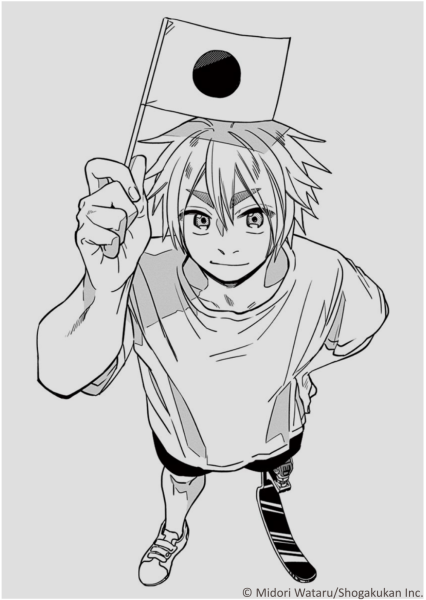
Scattered throughout the manga and woven naturally into the story, Midori-sensei feeds us bits and pieces of basic information about the job of an orthotist/prosthetist, the technical intricacies of prosthetics, details regarding the production of a socket, and the challenges an athlete faces when learning to run with a blade. Here and there, you can also find small trails leading you to sidetracks that just cry out to be explored… and, of course, I did. One such quest was inspired by Takekawa’s (Kikuzato’s soccer friend) search into amputee soccer. I was quite surprised about the many forms of soccer for athletes with disabilities—including competitions like the amputee soccer world cupthat took place in October 2022.

With all this information packed into the first three volumes of this manga, Kikuzato’s journey from a clueless youngster to a fledgling track and field athlete is as rewarding for him as it is for us readers. Particularly for those of us who have not yet learned (much) about para sports and para athletes, aside from the media coverage emanating from the Olympic and Paralympic Games.
What if… ?
Midori-sensei constructs the plot around the various aspects of the sport and athletic activities, like the training and the development of the athletes, and gives plenty of additional information. It’s a story about friendship, about aiming for a goal with grit and determination, told through lovable characters. This is what I love about sports manga; I couldn’t ask for more!
Just as with most stories in this genre, Kikuzato’s tale too, is made to be an inspiring one. And thus, it shows how he, after losing his left leg, finds joy in life again, thanks to new friends and a new athletic goal. But let’s keep in mind that he was particularly fast to begin with, owing to his days as a soccer player, which, in a way, predestined him to start a track and field career. Possibly, Chidori wouldn’t have given Kikuzato a second glance had he not exceeded the expected speed limit or tripped while running to the elevator.
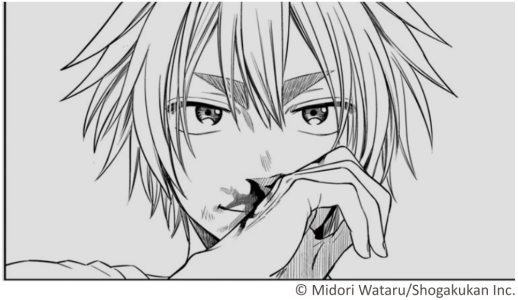
Kikuzato himself felt that he “can’t do anything” with his ‘old’ leg, but using the blade put a smile on his face. Additionally, when wearing the daily-use prosthetic, his vulnerability is stressed by the unexpected dangers that seem to lurk around every corner: from crowded streets or falling off stairs because he is shoved to tiresome walks without a chance to rest.
One might wonder how Kikuzato would have fared had he not been discovered by Chidori. And what options of gaining a ‘happy life’ would have been presented to him if he had no interest in sport?
We experience Kikuzato’s disability mainly within the sports setting, and see little about how other people engage with him and his disability. Accessibility, too, doesn’t seem to be a big issue for him, and last but not least, everybody in the story is nice (the father is an issue, though). Except for when Yashima tried to keep him from joining the track and field club, Kikuzato isn’t confronted with (obvious) discrimination. These are some crucial issues that are worth following beyond the pages of the manga.
A Story Worth Reading
While keeping in mind that the manga portrays a very specific type of para athlete, I enjoyed it as a sweet, uplifting, and feel-good tale that recounts in a lighthearted way the struggles of a young para athlete and promotes the Paralympics. It gives us a closer look at the specifics of para sports, the different disability classes, and the production of prosthetics. Additionally, it makes you think about your own attitude towards sports for people with disabilities, and for that alone, it’s worth reading.
Yen Press has licensed the manga in English. Until now, volumes 1 to 3 are out; volume 4 is due to be published in April 2023. If you haven’t read it yet, put it on your reading list. (Don’t worry, I only scratched the surface in my text here; there’s lots more going on.) If you have read until volume 3, you can look forward to two more exciting and heartwarming volumes. It’s such a pity that the story ends after five volumes. I would have loved to follow Kikuzato, his friends, and rivals a little longer.

Links:
- Original post published on sportsbaka.substack.com
- Check out the Blade for All Project that aims to make running prosthetics accessible for amateur athletes.
- The Japan Inclusive Football Association (JIFF)’s aim is to “develop and promote disability football.”
- The INAS is International Sports Federation for Persons with Intellectual Disability.
- For a closer look at how disability is portrayed in manga check out the book Reframing Disability in Manga.
- If you are curious about Japan’s history with the Paralympic Games, you might want to take a look at the book More Than Medals.
- Check the IPC website if you are curious about the other Paralympic sport disciplines.
Subscribe to never miss a deep dive into the exciting world of sports anime, manga, and manhwa!

